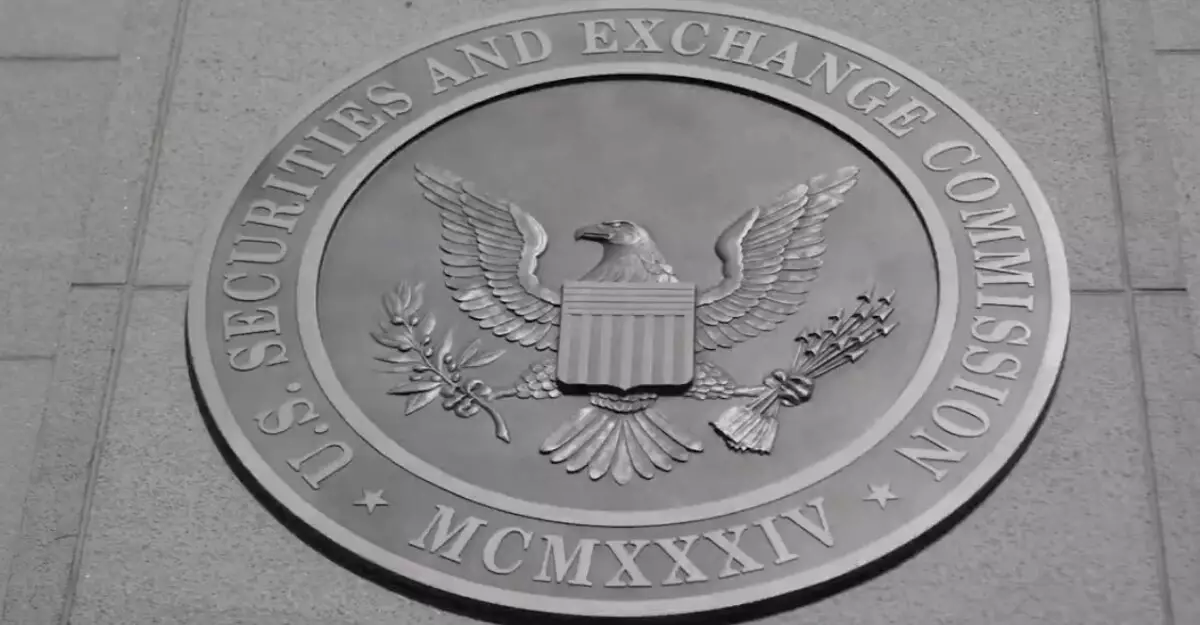In a bid to shape the future of the burgeoning cryptocurrency landscape, the U.S. Securities and Exchange Commission (SEC) is attempting to navigate the tumultuous waters of regulation under the directives of President Donald Trump. This effort kicks off with a series of roundtable discussions aimed at refining cryptographic guidelines to establish a safer, more secure trading environment. The latest roundtable, marked for April 11, exemplifies the government’s proactive approach to protecting national financial security while fostering innovation—a task that is as delicate as it is daunting.
With eminent figures such as Gregory Tusar from Coinbase and Katherine Minarik of Uniswap Labs serving on the panel, expectations are high. The title of the session—“Between a Block and a Hard Place: Tailoring Regulation for Crypto Trading”—not only evokes the complexities in cryptocurrency regulation but also hints at the uphill battle regulators face. As the SEC gathers insights from various stakeholders, the broader crypto community holds its breath, hoping for regulations that do not stifle innovation but ensure long-term stability.
Panelist Diversity: A Double-Edged Sword
The diverse lineup of nine panelists brings together perspectives from the Healthy Markets Association, the New York Stock Exchange, and various blockchain ventures, suggesting a collaborative effort that is necessary but fraught with complications. On one hand, such a breadth of expertise provides a well-rounded discussion that can yield comprehensive regulatory frameworks. On the other hand, the varied interests represented may lead to fragmented outcomes where certain voices overshadow others.
The inclusion of industry giants and startups alike should pave the way for a more inclusive regulatory process, yet there exists a looming concern: will the final regulations serve the interests of the average consumer or merely cater to entrenched financial institutions? As experts engage, the SEC must remain vigilant to ensure that regulations do not unintentionally gift-wrap privilege for established players, risking the very innovation they seek to foster.
Public Engagement: A Novel Approach?
The SEC’s encouragement for public input following the April meeting seems admirable on the surface. By opening the floor for suggestions and concerns, the commission aims to create a more democratic regulatory framework. However, one must question the effectiveness of this move. How will the SEC synthesize potentially thousands of differing opinions into coherent directives? And more significantly, will the voices of smaller investors be given equal weight against those of more influential stakeholders?
This endeavor underscores a growing need for transparency in governance—the essence of democracy itself. Commissioner Hester M. Peirce’s emphasis on listening to the public should signal a commitment to a fair process. Yet the challenge will lie in translating that commitment into actionable policy—something that has historically been plagued by bureaucratic inertia and favoritism towards large financial entities.
The Clock is Ticking
The urgency imposed by the Trump administration’s directive to finalize regulations by August leaves a narrow window for meaningful dialogue and assessment. With only a few months to tackle daunting challenges—such as defining what constitutes a security in the world of stablecoins—a comprehensive, well-formed industry-wide framework may become an unrealistic expectation.
As deadlines loom, there is the real possibility that rushed decisions may lead to half-baked regulations, which could inadvertently harm the very stakeholders they aim to protect. The industry is in dire need of established parameters to thrive, yet hastily drawn-up policies could set back the cryptocurrency revolution rather than propel it forward.
The Broader Implications
As the U.S. takes strides toward a “pro-crypto roadmap,” the implications stretch far beyond domestic markets. The actions taken here could either position the United States as a global leader in cryptocurrency innovation or allow it to slip behind jurisdictions that adopt more favorable regulations. The balance is precarious, as American consumers and entrepreneurs await a clear path forward in a landscape that moves at lightning speed.
The SEC’s forthcoming regulations will be vital in shaping the contours of both the American crypto environment and the global stage. As we witness the evolving relationship between regulators and innovators, it’s crucial to emphasize a synthesis of security and opportunity—a challenge that requires deftness, foresight, and, above all, a commitment to inclusion. The outcome of these discussions may very well define not just the future of cryptocurrency in the U.S., but the ethos of financial connectivity globally.

Leave a Reply